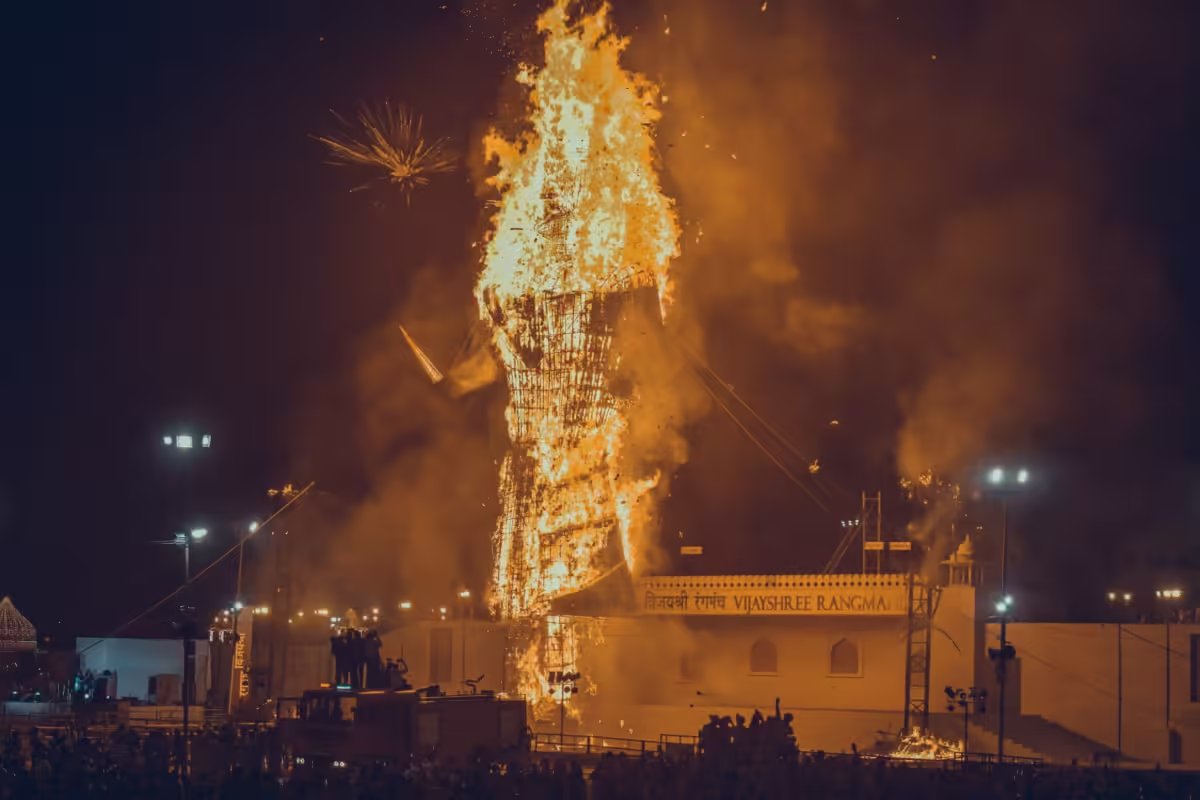The Hindu festival of Dussehra, also known as Vijayadashami, is celebrated with great fervor across India. This festival, observed on the tenth day of the Hindu month of Ashwin, marks the victory of good over evil and is celebrated by worshipping Lord Rama and burning effigies of the demon king Ravana. Dussehra is a reminder of righteousness, bravery, and the triumph of moral values. Let’s explore the significance and traditions associated with this vibrant festival.
Table of Contents
Why is Dussehra Celebrated?
Dussehra’s roots lie in the great epic, the Ramayana. According to the story, King Ravana abducted Lord Rama’s wife, Sita, during Rama’s 14-year exile. This action led to a fierce battle between Rama and Ravana, in which Lord Rama, with the help of his brother Laxman, the devoted Hanuman, and an army of monkeys, defeated Ravana and rescued Sita. This day, symbolizing Rama’s triumph over the demon king, is celebrated as Dussehra.

The day of Dussehra, observed on the Dashami (tenth) day of Sharadiya Navratri, celebrates the victory of virtue (Lord Rama) over vice (Ravana). In many parts of India, elaborate effigies of Ravana, along with his brother Kumbhakaran and son Meghnad, are burnt to celebrate the end of evil and mark the victory of good.
Mythological Beliefs Behind Dussehra
In addition to Rama’s victory over Ravana, there is another popular mythological story associated with Dussehra. According to Hindu mythology, Dussehra is also a celebration of the victory of Goddess Durga over the buffalo demon Mahishasura. Mahishasura, who terrorized the heavens, was defeated by Maa Durga after a fierce battle that lasted nine days, with the demon ultimately slain on the tenth day. This victory is celebrated as Vijayadashami, and it marks the conclusion of the Sharadiya Navratri festival. In several parts of India, idols of Maa Durga are immersed in water on Dussehra, symbolizing her return to her heavenly abode.

The Significance of the Shami Tree on Vijayadashami
In some regions, the Shami tree holds special significance on Vijayadashami. According to legend, during their exile, the Pandava prince Arjuna hid his weapons inside a Shami tree. Worshipping the Shami tree on this day is believed to bring good fortune, prosperity, and victory.
When is Dussehra Celebrated in 2024?
In 2024, Dussehra will be observed on October 12, based on the Hindu lunar calendar. The Dashami Tithi begins at 10:58 am on October 12 and ends at 9:08 am on October 13. This year, several auspicious yogas (astrological alignments) are expected to enhance the festival’s significance. The ideal time to perform Shastra Puja (worship of weapons) on Dussehra is between 2:03 pm and 2:49 pm on October 12.

Dussehra Celebrations in Bengal
In West Bengal, Dussehra, or Vijayadashami, is marked by the vibrant rituals of Sindoor Khela (the playful smearing of vermillion) and the Dhunuchi dance. Here, Dussehra signifies the farewell of Maa Durga as she returns to Mount Kailash after her earthly visit during Durga Puja. Devotees immerse Maa Durga’s idols in water, bidding her a grand farewell and praying for her return the following year. They seek her blessings to remove all sorrows and keep them safe from evil.







